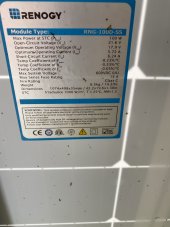If wanting to add more panels to a working system was the goal, and you had 2 Vic 100/ 50 SCC‘s ,would it be better to create two new banks and run them separate and joined with the main SCC OR parallel them as a single higher voltage unit to be joined with the main SCC presently in place ( Vic 150/100). Is that even possible .??? . Can you have 3 different inverters ( all Victron ) all synced to work together ? Would the acceptable voltage / amperage be the sum of the two new Units for that array .. 200v/100a total or limited to the 100/50 each.
I want to place this aux array at different angles than the main system. it will be wired 4s4p at about 87v VOC at STC. But in cold temps here( 10 to 15 below zero F) that would put me sorta close to the limits of 100 v With these units.
I have to plan what gear to get in advance and I’m not sure at all what would be best depending on how I can configure them.
I can’t add anymore panels to the main SCC , that I do know.
I am open as to the best ( any ) way to add them to my present system and still have plenty of voltage headroom left even when it’s very cold…
thank you ,
Jim..
I want to place this aux array at different angles than the main system. it will be wired 4s4p at about 87v VOC at STC. But in cold temps here( 10 to 15 below zero F) that would put me sorta close to the limits of 100 v With these units.
I have to plan what gear to get in advance and I’m not sure at all what would be best depending on how I can configure them.
I can’t add anymore panels to the main SCC , that I do know.
I am open as to the best ( any ) way to add them to my present system and still have plenty of voltage headroom left even when it’s very cold…
thank you ,
Jim..



